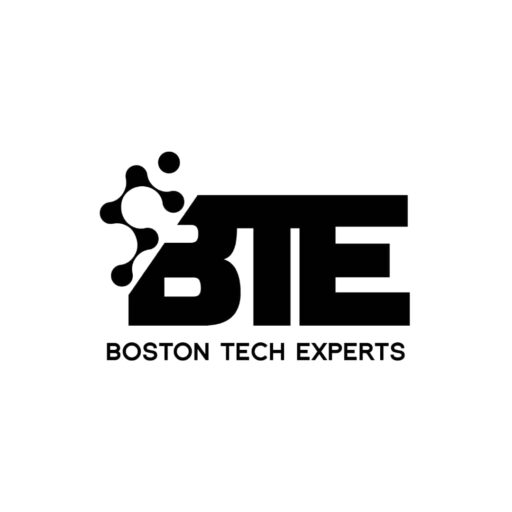
Online visibility is crucial in attracting clients and growing your professional services business. With nearly 90% of web traffic beginning with a search engine, securing top rankings isn’t just an option—it’s necessary. This guide outlines how strategic SEO for professional services can enhance your authority, drive organic traffic, and convert visitors into loyal clients.
Capturing attention is challenging in competitive fields such as law, consulting, and finance. Generic tactics won’t suffice. You need tailored content that positions you as an industry leader while directly addressing client pain points. Case studies show that businesses employing customized strategies can see a 40% increase in closed deals compared to those using basic techniques.
Long-term success involves creating high-quality digital assets, including optimized websites, engaging blogs, and effective landing pages. These tools work synergistically to build trust and credibility. You can establish a reliable pipeline of qualified leads when paired with data-driven SEO strategies. For professional services marketing, Boston Tech Experts can help you navigate this landscape, ensuring you stand out in the marketplace.
Key Takeaways
- Strategic optimizations boost visibility in competitive industries
- Authority-building content drives higher client engagement
- Case studies show 40 %+ improvement in deal closures
- Owned digital assets provide lasting marketing value
- Search engines influence 90% of client discovery journeys
Ready to Elevate Your Brand? Discover How We Can Supercharge Your Visibility! Contact Us Today!
Introduction to SEO for Professional Services
Your firm’s growth now depends on being visible where decisions begin: search results. Over 90% of buyers start with online research, making discoverability non-negotiable in service-driven industries.
Understanding the Digital Landscape
Today’s clients seek answers before making contact. They compare options through detailed queries, whether seeking legal guidance or financial planning. Content that directly addresses these needs becomes your first impression.

Why SEO is Critical for Professional Firms
Strategic optimization transforms passive searches into active engagements. Properly structured page titles and meta descriptions act as digital handshakes, signalling relevance to both users and algorithms.
Consider a consulting group that increased inbound leads by 65% within a year. They achieved this by optimizing service pages with client-focused language and publishing case studies demonstrating measurable results. Content quality directly influenced their perceived authority.
What is SEO for Professional Services?
In today’s digital-first marketplace, standing out requires more than expertise—it demands strategic visibility. When potential clients search for solutions, they seek answers from credible sources. Tailored search engine optimization bridges this gap by aligning your offerings with their needs.
Defining Key Terms and Concepts
Search engine optimization involves improving your website’s visibility in unpaid results. Core components include organic traffic (visitors from non-paid listings), rankings (your page’s position), and keyword optimization (matching content to search queries). Specialized approaches prioritize industry-specific language over generic tactics.

Turning Visibility Into Quality Leads
Data-driven strategies start with analyzing client search patterns. For instance, a law firm targeting “intellectual property disputes” attracts businesses facing those issues. This precision builds trust early and filters out irrelevant traffic.
Combining content planning with technical optimizations creates a seamless journey. Service pages enriched with case studies answer pressing questions while guiding prospects toward consultations. Over time, this builds a pipeline of motivated clients ready to engage.
Data-Driven Strategies for Elevating Your Authority
Your next client’s decision begins with data-driven proof of your capabilities. When 83% of buyers prioritize evidence-backed solutions, numbers become your most persuasive tool. This approach separates industry leaders from competitors stuck in guesswork.
Leveraging Market Research and Industry Insights
Market research reveals your audience’s needs, not what you assume they want. Analyze search patterns to identify trending topics in your field. For example, a marketing agency discovered clients sought “ROI-focused campaign management” 3x more than generic “marketing services.” This insight reshaped their content strategy, boosting organic traffic by 58% in six months.
Using Case Studies to Validate Strategy
Real-world results build credibility faster than claims. A financial advisory firm published case studies showing how their strategies helped clients achieve 70% faster retirement goals. Prospects spent 2.5x longer on these pages compared to service overviews, directly increasing consultation requests.
Regularly test and refine your approach using performance metrics. Track which content drives conversions, then double down on those formats. This cycle turns raw data into lasting authority—and turns browsers into loyal clients.
Content Strategy and SEO: Building a Foundation
What separates memorable content from forgettable noise? Your audience craves clarity, not clutter. A strategic approach transforms your site into a trusted resource while boosting discoverability. This requires pairing technical precision with resonant insights.
Creating Value-Driven Content
Start by mapping content to client challenges. A tax advisory firm increased consultation bookings by 33% after publishing guides explaining complex IRS updates in plain language. Their research revealed clients needed actionable advice, not jargon-filled explanations.
Develop formats that answer pressing questions. How-to checklists, comparison charts, and scenario-based FAQS position you as a problem-solver. One accounting group used client interviews to create a “Red Flag Audit” template, which is now their most shared resource.
Aligning Content with User Search Intent
Match your messaging to what users seek. For “how to choose a corporate attorney,” create comparison frameworks rather than service lists. A legal team targeting this phrase saw 50% more qualified leads by addressing decision-making pain points.
Regularly audit existing material. Update statistics, refresh outdated examples, and expand shallow posts. One consultancy revamped 12 older articles with current case studies, resulting in 28% higher organic traffic within 90 days.
Implementing SEO for Professional Services Strategies
Your expertise deserves an audience actively seeking solutions. Precision targeting separates generic outreach from client-focused strategies that convert. Begin by aligning your digital assets with the phrases decision-makers use during their research phase.
Mapping Language to Client Needs
Identify terms your ideal clients use when facing critical challenges. Tools like AnswerThePublic reveal question-based queries like “how to resolve partnership disputes” or “best ROI tracking methods.” Focus on phrases with commercial intent, such as “hire [service] consultant” rather than broad informational terms.
One accounting firm increased qualified leads by 47% by optimising for “tax compliance for SaaS startups.” Their content directly addressed niche concerns, improving ranking visibility among high-value prospects.
Amplifying Credibility Through Real Results
Client success narratives transform abstract claims into tangible proof. Structure case studies around specific challenges: “How We Helped [Industry] Client Achieve [Result].” Include metrics like “72% faster contract approvals” to demonstrate impact.
A management consultancy boosted consultation requests by 33% after featuring client studies with video testimonials. These stories created emotional connections while showcasing experience in action.
Update success stories regularly with fresh data. Track which narratives drive the highest engagement, then refine your approach. This cycle turns satisfied clients into your most persuasive marketing assets.
On-Page and Technical SEO Best Practices
Every click your website earns starts with two critical factors: clarity and functionality. While compelling content grabs attention, technical precision ensures search engines can properly index and prioritise your pages. Service-based firms often overlook this dual focus, but mastering both drives lasting results.
Optimizing Meta Tags, Titles, and Descriptions
Your title tag acts as a first impression—keep it under 60 characters and front-load primary keywords. Meta descriptions should summarize value in 155 characters, using action-oriented language like “Discover how to streamline compliance processes.”
Header tags (H1-H3) structure content for readability and relevance. A law firm increased click-through rates by 30% after rewriting generic headers like “Services” to “Resolve Contract Disputes in 3 Steps.” Precision here directly impacts visibility.
Conducting Regular Technical Audits
Broken links or slow load times sabotage user trust. One consultancy identified 400+ crawl errors during a site audit—fixing these boosted rankings for 72% of their priority keywords within four months.
Use tools like Screaming Frog to monitor mobile responsiveness and XML sitemap accuracy. Balance speed optimisations with visual appeal: Compressing images improves performance without sacrificing quality.
Technical adjustments work best when paired with strategic intent. For example, redirecting outdated blog posts to updated guides preserves authority while maintaining seamless navigation.
Link Building and Digital PR for Authority
Quality backlinks act as digital votes of confidence for your expertise. When reputable sites reference your content, search engines view this as third-party validation. These endorsements significantly impact your visibility in competitive fields where trust determines client decisions.
White Hat Link Building Techniques
Ethical strategies focus on earning links through value creation rather than manipulation. Start by identifying publications your ideal clients read: pitch guest articles that solve specific industry problems, not promotional pieces. A financial advisory firm gained 12 authoritative links by explaining regulatory changes affecting small businesses.
Digital PR initiatives amplify these efforts. Journalists often cite these resources when publishing original research or hosting expert roundups. One legal group secured 27 media mentions by sharing data on corporate litigation trends. These mentions drove referral traffic while improving domain authority.
Prioritize relevance over quantity. A single link from an industry association website often carries more weight than dozens from unrelated directories. Client service pages with detailed case studies naturally attract organic backlinks from partners and industry publications.
Track how these efforts impact your results. A consulting agency improved rankings for 18 targeted keyword phrases within six months of implementing ethical link-building practices. Their digital PR campaign simultaneously increased qualified lead volume by 41%.
Integrating SEO and SEM for a Cohesive Strategy
Combine two powerful tools to dominate search results while capturing high-intent clients. Paid and organic strategies work like gears in a machine—when synchronised, they drive faster growth than either could achieve alone.
Complementary Dynamics of SEO and PPC
Paid ads deliver immediate visibility for competitive terms while your organic efforts mature. A law firm bidding on “intellectual property attorney” gained top ad placements, securing consultations within days. Simultaneously, their website climbed organic rankings for related long-tail phrases like “protecting software patents.”
This dual approach covers multiple stages of client research. Paid campaigns target urgent needs, while optimized pages address more profound questions. One financial advisor increased lead volume by 62% using ads for “retirement planning services” alongside blog content explaining tax implications.
Using Data from SEM to Refine SEO Tactics
Paid campaigns reveal which keywords convert best. Analyse performance metrics to identify high-value terms worth targeting organically. A consulting group discovered that “merger integration checklist” had a 23% conversion rate in ads. They then created a detailed guide that ranked #1 organically within four months.
Real-time adjustments keep strategies aligned with market shifts. Monitor seasonal trends in paid search queries to update your content calendar. For example, tax firms might prioritize “estate planning changes” each April based on SEM data spikes.
Blending these approaches creates a self-reinforcing cycle. Paid wins inform organic priorities, while rising organic rankings reduce long-term ad costs. This adaptability ensures you stay ahead in fast-moving industry landscapes.
Advanced SEO Techniques for Professional Services
Staying ahead in competitive fields demands more than foundational tactics—it requires precision tools anticipating client needs. Advanced methods refine your approach, ensuring lasting relevance as search algorithms evolve.
Local SEO and Regional Optimization
Optimise for location-specific searches to capture nearby clients. Claim and update your Google Business Profile with accurate service areas and client reviews. A consulting group targeting Chicago businesses saw 45% more local inquiries after adding neighborhood-specific landing pages.
Implementing Structured Data and Schema Markup
Help search engines understand your content better with schema markup. This code highlights key details like service offerings and client ratings. One law firm using the FAQ schema doubled its appearance in featured snippets for “contract dispute resolution.”
Adopting Emerging Trends and AI Tools
AI-powered platforms now predict content gaps and optimize titles in real-time. A marketing agency used these tools to identify 12 untapped keywords, ranking #1 for 8 within 90 days. Regularly test voice search optimization—queries like “best consultants near me” grew 200% last year.
Start by auditing existing content for schema opportunities. Then build localised pages addressing regional pain points. Finally, allocate 20% of your budget to test AI-driven keyword tools. These steps keep your strategy agile in shifting markets.
Optimizing User Experience and Conversion Rates
Visitors decide within seconds whether your site meets their needs. Clear navigation and instant access to answers keep them engaged while signalling quality to search engines. This dual focus transforms casual browsers into committed clients.
Enhancing Site Navigation and Mobile Usability
Intuitive menus guide users to solutions faster. Simplify choices with dropdowns that mirror client priorities—like “Financial Planning Tools” instead of generic “Resources.” Mobile responsiveness matters more than ever, with 61% of searches happening on phones. Pages loading under two seconds see 35% lower bounce rates.
One accounting firm redesigned its mobile layout using card-based categories. This change increased time-on-page by 48% and improved rankings for local search terms. Regular speed tests using tools like PageSpeed Insights prevent performance dips that frustrate users and algorithms.
Streamlining Conversion Paths and CTAs
Every page should answer critical questions while guiding toward action—place contact forms where users naturally seek help, after pricing breakdowns or case study summaries. A/B testing reveals which CTA phrasing works best: “Schedule Your Free Audit” outperformed “Contact Us” by 27% in one experiment.
Analyse heatmaps to identify dead zones in your layout. Moving a consultation button above the fold doubled leads for a legal group. Pair these adjustments with exit-intent popups offering downloadable checklists—a tactic that recaptured 22% of abandoned visitors.
Continuous improvement separates thriving sites from stagnant ones. Tools like Hotjar provide insights into scroll depth and click patterns. Refine elements monthly based on real behaviour data, not guesses. This approach builds seamless journeys that convert while satisfying technical requirements.
Conclusion
Transforming digital strategies into measurable outcomes begins with focused execution. Combining data-driven optimisations, technical precision, and client-centred content creates a competitive edge that outperforms generic approaches. Building authority through case studies and targeted keyword alignment turns casual visitors into committed clients.
Integrating organic and paid strategies amplifies your reach while reinforcing credibility. Track performance metrics to refine high-impact pages and conversion paths. This approach helps companies sustain growth even as markets shift.
Your next step? Audit existing assets to identify gaps in technical SEO or content depth. Prioritise link-building opportunities that align with your expertise. If challenges arise, seek guidance from specialists who understand your industry’s unique demands.
Lasting success comes from consistent adaptation. Start implementing these tactics today to solidify your position as a trusted resource—and watch your digital footprint expand organically.






